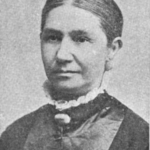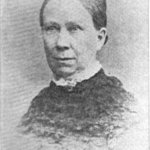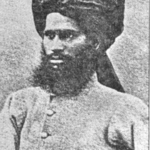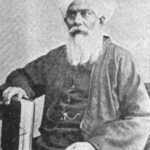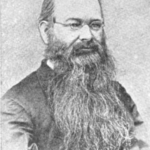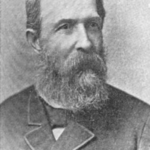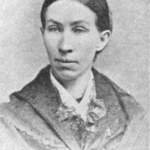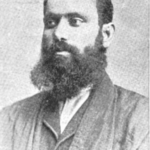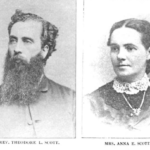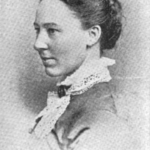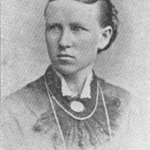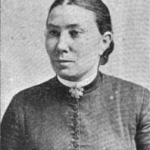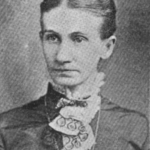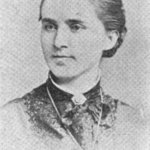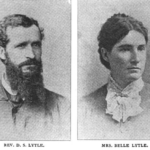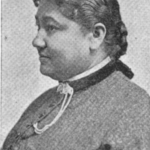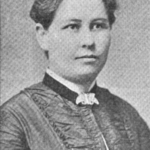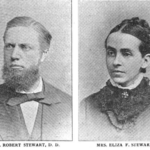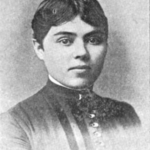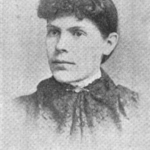Rev. Andrew Gordon
Reverend Andrew Gordon (September 17, 1828 – August 13, 1887) was a Presbyterian Missionary sent by the American Presbyterian Synod (later the United Presbyterian Church in North America) to begin their mission in India. His mission began in 1855 and ended in 1885. The Sepoy Mutiny occurred during Gordon’s time in India; two chapters of his book, “Our India Mission,” are dedicated to this five month period.
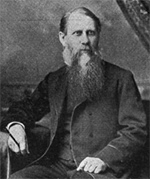
Image Gallery
Themes
“When it comes to the last part of the commission, by teaching converts to observe all things whatsoever Christ has commanded, it is then our most difficult work has began.” (Our India Mission, p. 178-179).
“That the story of a Christian mission, established in a dark portion of the benighted heathen India as recently as the year 1855, feebly sustained from the first, and at times ready to perish, but now having its eight organized churches, its scores of Christian schools, its theological and literary institutions, and its Christian community of more than three thousand souls, should be given to the public, will not be called into question.” (Our India Mission, p. vii) .
“This, our first school of the kind, was taught in a Native dwelling, situated in the heart of the city of Siӓl’Kot… Our only rival was the government school- entirely secular- which was not much larger than our own, public instruction in India being then in its infancy. The Director of Public Instruction in the Panjӓb promised to discontinue this rival school when it should be fairly excelled by ours. Our school was soon superior to it, and so acknowledged by the Director himself, yet his promise was never fulfilled.” (Our India Mission p. 116-117)
Gordon’s intentions for his time in India are explicitly the religious conversion of the Indian people. In their mission work, the team worked on building mission homes and schools to further their religious agenda. This theme also coincides with the racial views the group professed through their colonial action. In the educational sphere, it was interesting to see that both secular and religious education existed at this time. Some schooling was run by the British. There was an interesting interaction between these two colonial powers- the American and the British- both attempting to extert influence over India at this time. Despite their competing interests, they both sought to colonize and Westernize India, which was part of the growing pressure over India that resulted in the Sepoy mutiny.
“This old method, so generally followed by missionaries in North India, of collecting or colonizing native Christian converts on mission premises or elsewhere, and providing in some way for their support or employment, was, in the course of this decade, discontinued in our mission. Seemingly necessary in earlier years, it became later in our history, the source of many evils, encouraging false pretensions to religious inquiry, hindering the development of a spirit of independence in the converts, increasing the number of hangers-on…” (Our India Mission, p. 393).
“Who will come to the relief of these poor people? Who will free the oppressed, enlighten the ignorant, lift the masses from their degradation, and make them as good, great, and happy as they are now bad, wretched and miserable, and poor and blind and naked?” (Our India Mission, p. 84)
Throughout Gordon’s text, his descriptions of the Indian people he encountered describe them as backward and unenlightened. These depictions are due in part to his religious beliefs, but also due to a belief in racial superiority that undergirds his description. His intentions for his time in India are clearly colonial; paternalism is a primary lens through which he describes the Indian people with whom he communicates.
“The first mutinous act of a Sepoy regiment was usually to shoot down English officers; this was generally understood to be a signal for beginning the indiscriminate butchery of all white men, women, and children.” (Our India Mission, p. 134)
The Sepoy Mutiny was one major political event which occurred during Gordon’s time in India. This local resistance was incredibly influential over Gordon’s time in India, and he spent two chapters of his book to discussing this year and a half long event. His descriptions of the event were also clearly colored by his racial views; Gordon’s descriptions of the Indian people who participated in the rebellion were as savage and murderous. This mutiny was a reaction to the British control of India, and their efforts to take control of important Hindu regions. Missionaries were also one key component of a growing trend at this time that was a broad attempt to Westernize India, and to strip it of its history and culture. Rev. Gordon’s team, though American rather than British, fit broadly into this pattern of attempting to colonize India and rid it of it’s rich history. Rather than contextualizing the Sepoy mutiny within these historical patterns, of course, Rev. Gordon’s account of the mutiny only describes the fear he experienced during this time. He also characterizes the Indian people involved in the rebellion as uncivilized and violent, a choice which fits into the broader patterns of how Rev. Gordon perceives the Indian people he encounters, even as he attempts to convert them.
"That the story of a Christian mission, established in a dark portion of the benighted heathen India as recently as the year 1855, feebly sustained from the first, and at times ready to perish, but now having its eight organized churches, its scores of Christian schools, its theological and literary institutions, and its Christian community of more than three thousand souls, should be given to the public, will not be called into question." (Our India Mission, p. vii)
Image: Sita Ram,The chowk and market-place at Kankhal, 1814
Places Visited
“The novelty of everything that met my eye in this strange land of our future laborers was so striking as to completely absorb my attention” (Our India Mission, p. 39)
“Their features- so very much like our own- told us in a moment that they were not Ethiopians, nor Mongolians, nor Malays, nor American red men, but Caucasians- near kinsmen of our own” (Our India Mission, p. 39)
Gordon’s commentary on the racial identification of the people he encountered spoke to a growing process of racial formation occuring in the United States at the time that Gordon began to export through his travels. Despite identifying some physical similarities, Rev. Gordon describes himself as being intensely interested in their differences as well: he says he was specifically was curious about their climate, poverty, and their oppression, which he sees as leaving them Godless. Gordon’s perspectives on the people he encountered in India were deeply shaped by the sociopolitical status of the United States at the time, particularly the prevalence of slavery, and these particular racial views influenced Gordon and were necessarily bound up in his judgements of the cultures he encountered in his travels. Gordon’s initial reactions to the first Indian people he encountered speak to the colonial and paternalistic viewpoint toward which he approached his travel, which characterize his missionary work.The group had four primary projects while they were in Calcutta: to wash their clothes from the ship, they hired a teacher and took their first language classes, and learned about the work of other missionaries.
“Sahӓ’Ranpur, a city of about 40,000 inhabitants, is the seat of the oldest mission station of the Reformed Presbyterian Church of America, and was at that time occupied by the Rev. J.R. Campbell, D.D. , and the Rev. J. Caldwell” (Our India Mission, p. 42)
In Sahӓ Ranpur, the group was in a transitory period before they traveled to Siӓl’Kot to really begin their mission. The bulk of the groups time in Sahӓ Ranpur was devoted to the study of the Urdu language. Leaning the Urdu language was important so they group communicate with locals and share religious doctrine. During this period, the group also started teaching English lessons in a nearby mission school. This was their early endeavor into the educational work of their mission, which was an important aspect of their mission they would later expand upon through their building of schools.
“I was in no way disappointed in regard to Siӓl’Kot; the favorable impressions received by report before visiting it were confirmed, and it was chosen as our headquarters” (Our India Mission, p. 52)
Gordon began to travel to Siӓl’Kot on the 8th of August, 1855. This was chosen as the headquarters of their mission. This is where the team built their first mission and home, and first began to engage in the educational component of their mission. More details on the institution building components of their mission can be found in the timeline.
“The Mahӓrӓjӓ of Kashmir had recently taken the position that if Christians should open their religious books and preach from them within his dominions, and should be assaulted and put to death for so doing, he would take no notice of their cases” (Our India Mission, p. 306)
The group visited Kashmir after hearing of persecution against Christians there. The group attempted to continue their religious conversion in Kashmir, and were pleased to be able to continue to share information about the New Testament while traveling there. This part of their mission was interesting in developing and expanding their outreach and sharing religious doctrine in spaces where it might be unwelcome. This, alongside the underlying causes of the Sepoy mutiny, speak to an interesting relationship between the local Indian people and the visiting missionaries who attempted to Westernize, convert, and erase local histories. These attempts were sometimes met with resistance or hostility.
“Again we wished to visit Jhï’lam with the view of of occupying it as a second principal Mission Station.” (Our India Mission, p. 120).
The group attempted to visit Jhï’lam with the goal of establishing it as a second principal missionary station, but failed to make the 60 mile journey. One of the carts they took toppled early into their journey. The group was exhausted after only one day of travel, and set up to eat their provisions and pitch their tents. After doing this, they realized they had only traveled five miles. When they realized they had 60 more miles to travel ahead, they decided to cancel the travel. Because of their failure to complete the mission, the gorup postponed the creation of a second missionary station at Jhï’lam. This attempted trip spoke to some of the difficulties the group encountered in traveling during the time period, even as they relied on local laborers to carry their carts.
"I have given prominence to the natives, by narrating at some length their conversions, labors, sufferings, and achievements in connection with the great religious movements, believing that the development of of the work among the people to whom we are sent is the very of foreign mission enterprise." (Our India Mission, p. ix)
Image: Sita Ram, Lord Hastings’ party in an elephant procession approaching the Rumi Darwaza in Lucknow, 1814.
